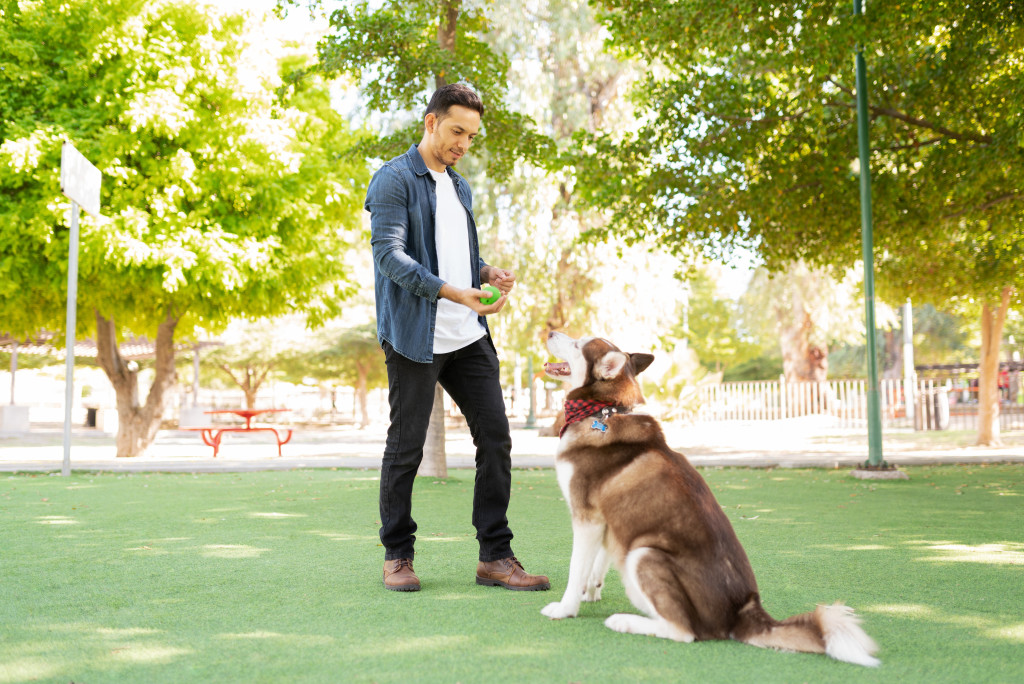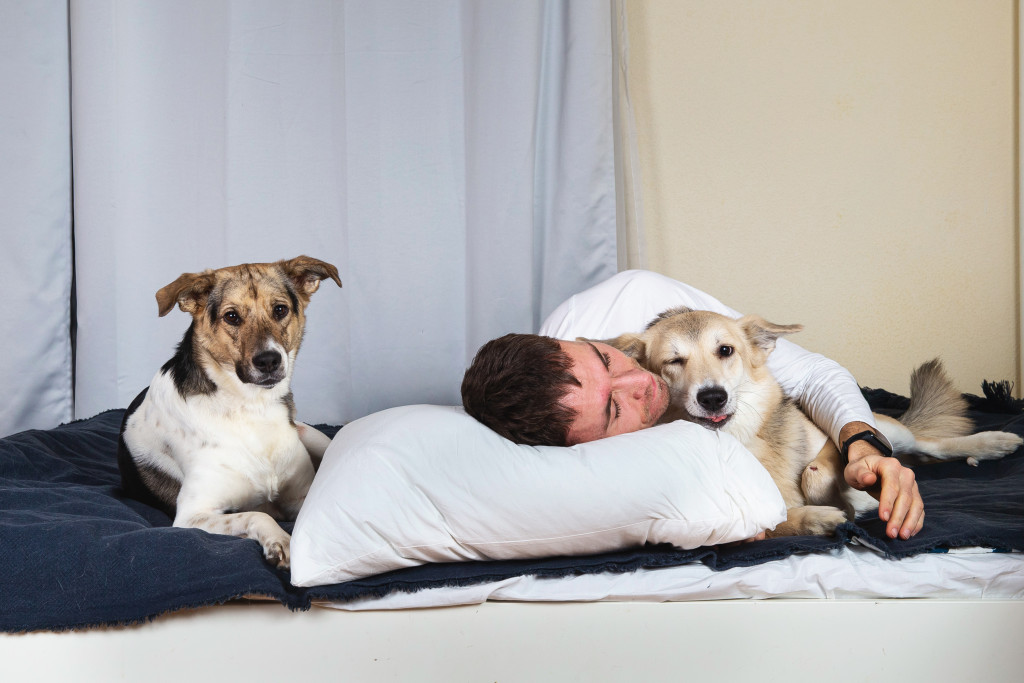- Create appropriate spaces for your pet, such as beds and furniture.
- Provide a variety of toys and activities to keep your pet entertained.
- Incorporate training strategies such as socialization, crate training, leash training, and basic commands into your home.
- Introduce new pets or visitors carefully with short interactions.
- Take care of and maintain any trees or shrubs in your yard.
Having pets as part of the family is an exciting experience, but it can seem difficult when you’re trying to make your home fit for both pets and humans. You want to create a safe and comfortable environment for everyone in the house—especially your beloved pet—so everyone is happy and content under one roof. Luckily, you can do plenty of things to ensure your pet feels right at home! Here are five practical ways you can make your home pet-friendly.
1. Create Appropriate Spaces for Your Pet
The first step to making your home pet-friendly is creating appropriate spaces. You’ll want to be sure that the area they have access to is clear of any potential hazards, such as cords and plants, and has plenty of comfortable furniture or beds they can relax on. If you have multiple pets, it’s also vital to ensure each one has its designated space, so they don’t feel like competing for attention or resources with the other animals in the house.
2. Provide a Variety of Toys and Activities
Another way to make your home pet-friendly is to provide a variety of toys and activities. This can be anything from interactive puzzle toys that encourage problem-solving skills to simple chew toys or plushies they can snuggle up with. Your pet must have the opportunity to explore new things and have something to do when you’re not around. This will keep them entertained and help prevent boredom. Additionally, consider rotating the toys to keep things interesting. This can also help reduce destructive behavior like chewing or excessive barking due to boredom.
3. Incorporate Training Strategies Into Your Home

You must incorporate training strategies into your daily routine if you want your pet to feel comfortable in their home.
Here are some training strategies you must teach your pet:
Socialization
The most important training strategy for your pet is socialization. Through positive interactions with both people and other animals, you can help build your pet’s confidence and teach them how to behave appropriately in different settings or around new people or pets. Start slow, introducing your pet to one person or animal at a time in familiar and comfortable environments. As your pet gets more comfortable with its surroundings, you can gradually increase the number of people or animals present.
Crate Training
Crate training is essential to help your pet get used to its new home environment. When introducing your pet to a crate, set it up in a comfortable place where your pet can feel safe. Put some treats in the crate and toys or blankets, so your pet has something familiar to associate with the crate. Ensure not to leave your pet unattended for too long, as this could lead to them developing destructive behavior.
Leash Training
Leash training helps ensure your pet is safe and can be taken for walks around the neighborhood. When leash training, let your pet get used to wearing a collar before attaching their leash. Ensure their collar fits them properly and is comfortable for long walks. Once they’re comfortable, begin to practice walking around the house first and then take them out for a walk in the neighborhood. Ensure your pet is always by your side and reward them with treats or praise whenever they obey commands.
Basic Commands
Teaching basic commands such as “sit,” “stay,” and “down” can help your pet learn how to respond to commands and understand boundaries. Start with simple commands such as “sit” or “come,” and then move on to more complicated ones such as “stay” or “heel.” Keep the training sessions short and fun, using rewards or treats to motivate your pet. You should also practice the commands in various settings so your pet can learn how to respond correctly, even when there are distractions.
4. Introduce New Pets or Visitors Carefully

If new pets or visitors come into your home, it’s important to ensure they are introduced carefully. You don’t want to put any stress on your pet by forcing them into an unfamiliar situation too quickly. Start with short interactions and slowly work up to longer ones until both animals feel comfortable in each other’s presence. It’s also important to keep an eye on the interaction to ensure it remains positive and safe.
5. Take Care of and Maintain Your Trees and Shrubs
Finally, if you have any trees or shrubs in your yard, it’s important to ensure they are well taken care of and maintained. This is especially true if you have small dogs that like to wander around the yard. Trimming away any overgrown branches can prevent them from getting tangled up or injured while exploring their new environment. For larger trees and shrubs, it’s essential to consider investing in a professional tree service. A regular maintenance plan of pruning away dead or diseased branches can help your pets by preventing falling limbs or bugs from causing issues.
To Wrap It Up
Making your home pet-friendly doesn’t have to be a difficult process. By following these five practical steps, you can ensure that humans and pets feel comfortable and happy living under one roof! From creating appropriate spaces for your pet to taking care of any trees or shrubs in your yard, there are plenty of ways you can make sure everyone feels welcome. With just a little effort, you can make your home pet-friendly and enjoyable for everyone.
